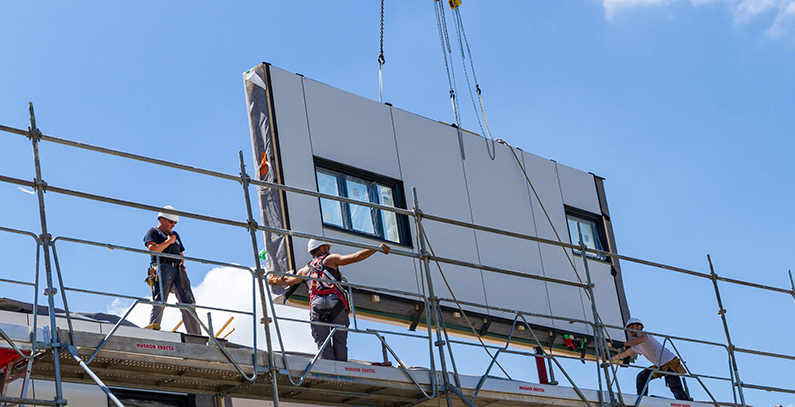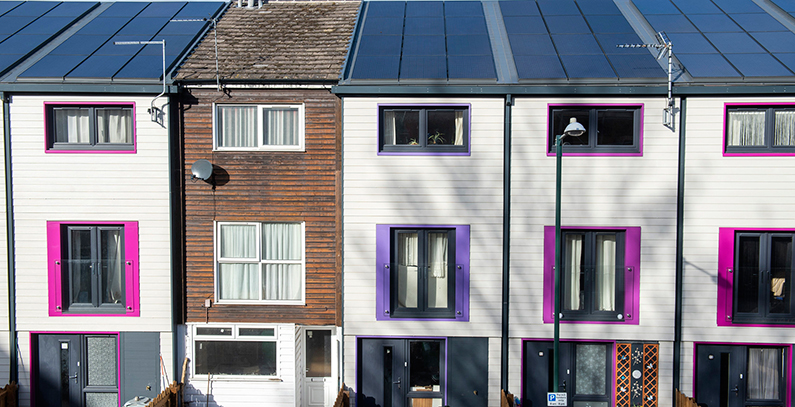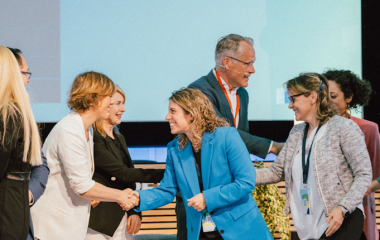
A Net-Zero Energy house, developed by Energiesprong (Energy Jump), generates sufficient energy to heat the house, provide hot water and power its household appliances. Money normally spent on energy bills and maintenance work pays for this energy-efficient upgrade.
The initial concept was originated in the Netherlands, where 5,000 homes have successfully been retrofitted to date, but now it is spreading all across Europe, and North America.
According to EU data, buildings are responsible for approximately 40% of energy consumption and 36% of CO2 emissions in the EU. At present, about 35% of the EU’s buildings are over 50 years old and almost 75% of the building stock is energy inefficient while renovation rates are very low (0.4-1.2% of the building stock each year).
Solution

The aim of Energiesprong is to bring about desirable, viable net-zero energy refurbishment solutions to the mass market by 2020.
Energiesprong is a revolutionary multiple whole house refurbishment and new built standard and funding approach. It originated in the Netherlands as a government-funded innovation programme.
“We are an independent market development team setting a new standard for comfortable, super energy-efficient refurbishments (and new built solutions) with guaranteed performance. We also introduce a new financing approach and we work with governments to improve regulations for these solutions,” the Energiesprong website reads.
Energiesprong uses the social housing sector in each market as the launching market for these solutions, with a view to later scale to the private home-owner market. The model offers integrated refurbishment packages with pre-fabricated facades, new installations, and a new roof with solar panels.
Radical transformation

The Energiesprong model is a radical transformation – both practically and conceptually – as it focuses on creating a volume market for solutions that satisfy five key criteria:
- Guaranteed performance for 30 years. This ensures that the quality of the product (with high indoor climate and energy performance standards) is locked in and guaranteed.
- Hassle-free, one-week implementation.
- Affordability. The investment is financed in two ways: through energy cost savings from tenants and by reduced maintenance and repairs costs for housing associations. The objective is that tenants have the same monthly expenses – they pay the housing association an energy service plan instead of the bill of the energy supplier. The housing association can use this new income stream to pay for the renovation.
- Attractiveness. The quality design makes Energiesprong properties a fun, lifestyle choice, providing upgraded properties that occupants aspire to.
- From tendering to purchasing. The traditional way of procuring – based on detailed specifications and drawings – is replaced by purchasing well-developed housing concepts with guaranteed energy and (indoor) quality performance.
Results and awards
Today over 5,000 net-zero energy houses are in use in the Netherlands. In France, 26 retrofits are being realized, while 6,550 retrofits are planned, in the UK, 15 demonstrators are complete of 186 retrofits confirmed to date. In Germany, the first pilot is in preparation. Energiesprong is also active in Canada and New York State.
In 2018, Energiesprong won the World Green Building Council award and Nottingham’s Energiesprong homes won the UK Housing Award and Shift Award. In 2019, Energiesprong’s E=0 and Transition Zero projects won the EU Sustainable Energy Award while Energiesprong UK won the prestigious Ashden Award. That same year, solution provider Melius Homes won a Construction News Awards for its Energiesprong retrofits in Nottingham.


















Be the first one to comment on this article.